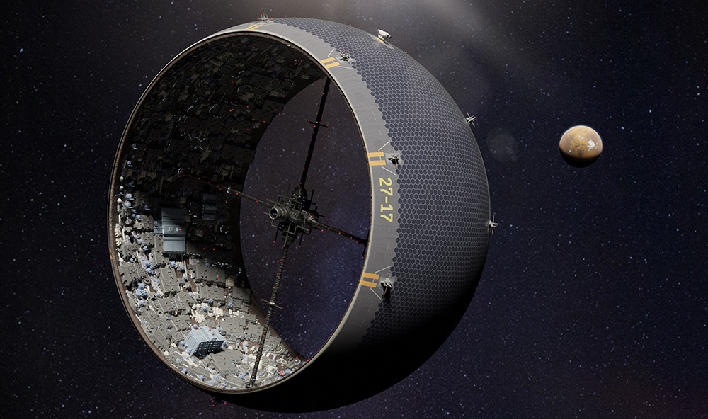If you’ve ever sat around wondering “why can’t we just hollow out an asteroid, make it spin, and then live on it?” know that you’re not alone. In fact, a research team from the University of Rochester did a semi-serious study of the matter and put together a comprehensive plan about how one might go about doing such a thing. It doesn’t require any exotic tech (though it’s a bit beyond what we’re currently capable of), and would “only” cost on the order of $34 billion according to the team.



Something so small would have to spin so fast that the sun would look like a strobe light. You’d have to orient it so that the inside never sees the sun, but it’ll always be night.
That said, I love the idea of building halos, and can’t wait for them to be commonplace.
I don’t see it in this particular paper, but I’ve seen other semi-serious proposals where you also build a partially reflective “mirror” in a fixed position away from the habitat so that it always gets indirect sunlight (and then I guess you just pull the curtains closed when it’s time to sleep :) )
No it wouldn’t. The paper is talking about structures on the kilometer scale. In particular, the abstract talks about a 3 km radius habitat simulating 0.3 g of gravity. This would require spinning at only 0.3 RPM. Even if they wanted Earth gravity, it would only require 0.55 RPM. Neither of those are anywhere close to strobe light territory.
EDIT: The above was referring to the University of Rochester’s paper, not to Dr. Jensen’s paper. I didn’t realize they were two different papers. Dr. Jensen’s proposal is for a slightly smaller 2.5 km radius station. This doesn’t change my point any though. Assuming a worst case of Earth gravity would still only require spinning the station at 0.6 RPM. (You can actually go quite a bit smaller than either of those proposals without turning the thing into a rave. A 224 meter radius would still only need to spin at 2 RPM to generate Earth gravity, for example.)